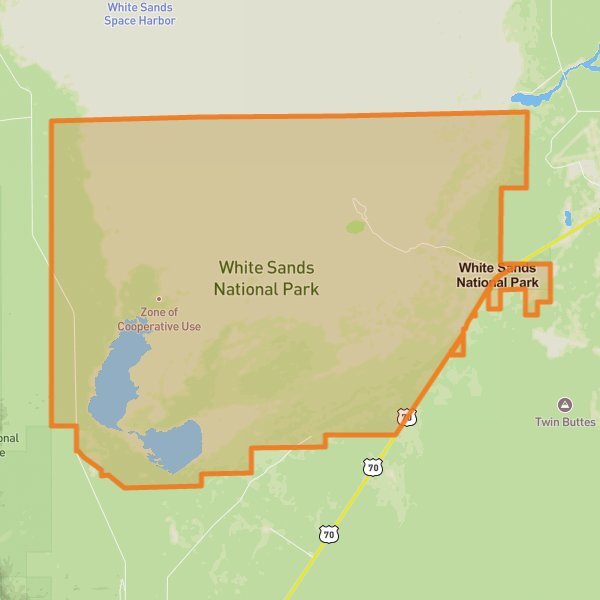1 of 164 parks in United States of America · Number of Hiking trails: 7 · 858.43 km²
White Sands National Park is located in southern New Mexico, USA, within the Tularosa Basin. The nearest cities include Alamogordo and Las Cruces, with El Paso, Texas, lying about 85 miles to the south. The park is known for its striking white gypsum sand dunes, covering 275 square miles, making it the largest gypsum dune field in the world. The park was first established as a national monument in 1933 by President Herbert Hoover and was later redesignated as a national park in 2019. White Sands holds cultural significance, with evidence of human occupation in the area dating back over 10,000 years, as well as nearby military operations influencing its history. Parking facilities at White Sands National Park are plentiful, with designated parking areas located at the visitor center, trailheads, and along the scenic Dunes Drive. Parking is free with a park entrance fee, which covers a seven-day access period. The park supports a unique range of wildlife adapted to the extreme desert environment. Notable species include the white sands pupfish, the bleached earless lizard, and various migratory birds. Mammals such as coyotes and kit foxes are also commonly seen in the area. The park's flora is equally specialized, with species like the Rio Grande cottonwood, honey mesquite, and soaptree yucca thriving in the gypsum sand environment. These plants have adapted to the park's alkaline soil, creating a distinct desert ecosystem. Significant landmarks include the vast dunes themselves, along with Lake Lucero, a seasonal playa lake that offers a glimpse into the park's geological past. Public transportation to the park is limited, so most visitors travel by car. Access to the park is primarily through U.S. Route 70, which connects to major highways in the region.
Read more
Parking: Available
Total spaces:
Opening hours:

There are public restrooms available in White Sands National Park

